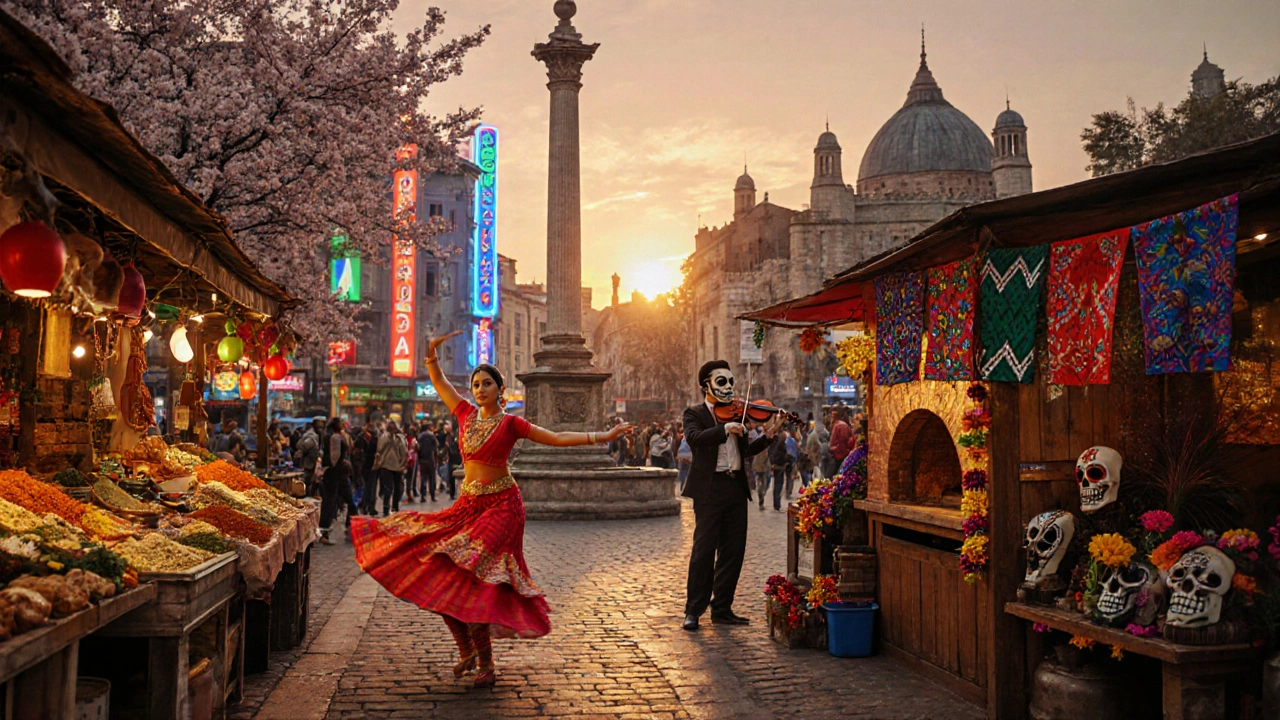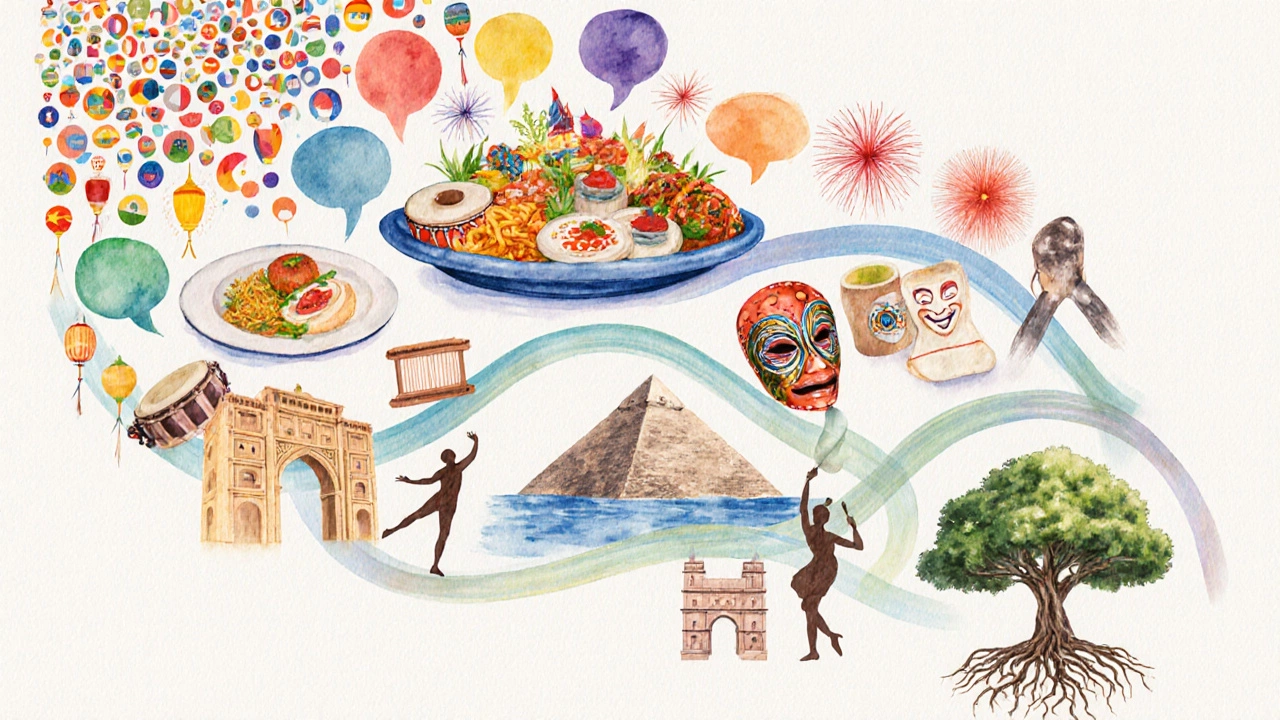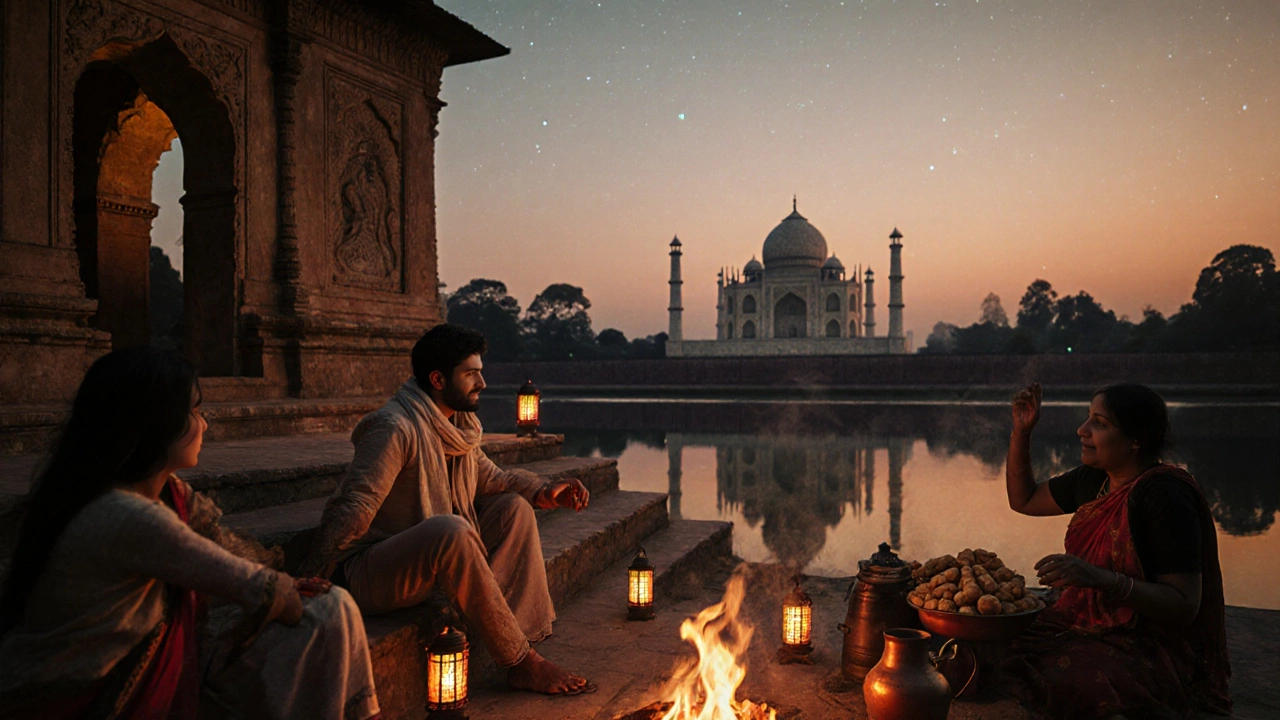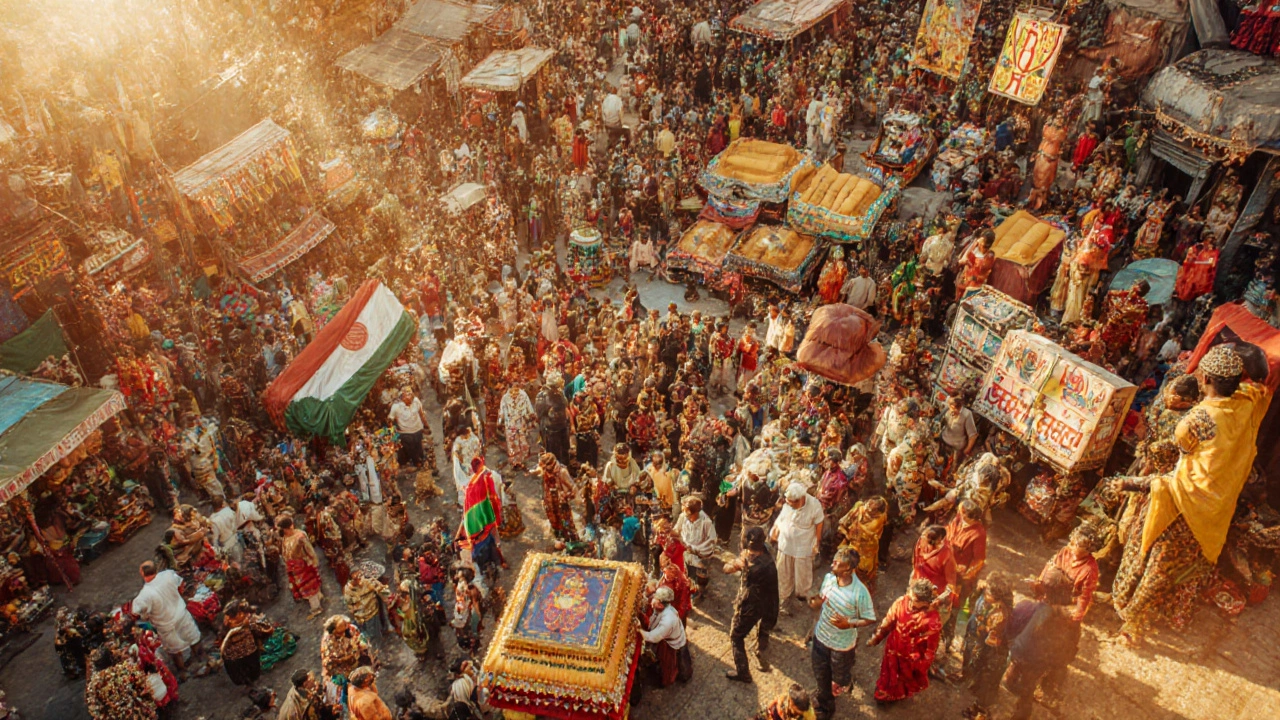Top Countries with the Most Vibrant Cultures for Travelers

- Oct, 14 2025
- 0 Comments
- Aaron Blackwood
When we talk about culture is the shared set of customs, arts, beliefs, and social behavior that defines a community. pinpointing the best culture in the world isn’t about ranking art museums; it’s about spotting where traditions, language, cuisine, festivals, and heritage sites blend into a living experience for visitors. This guide breaks down the key ingredients that make a culture stand out, showcases five countries that consistently deliver unforgettable cultural journeys, and gives you practical tips to plan a trip that immerses you in the heart of those societies.
How Experts Evaluate Cultural Richness
Researchers and travel insiders use a handful of measurable factors to gauge how vibrant a culture feels on the ground:
- Language diversity - the number of native languages spoken and how widely they’re used in daily life.
- Cuisine variety - the range of regional dishes, street foods, and cooking traditions that tell a story about geography and history.
- Festival calendar - frequency and uniqueness of public celebrations, from religious rites to seasonal fairs.
- Art and craft heritage - presence of indigenous music, dance, visual arts, and handcrafted goods.
- World Heritage Sites count - UNESCO‑listed monuments, cities, and landscapes that preserve historic authenticity.
- Tradition continuity - how well age‑old customs survive in modern daily life.
Each factor can be quantified (e.g., number of UNESCO sites) or qualified (e.g., depth of oral storytelling traditions). Combining them gives a cultural‑richness score that helps travelers decide where to go.
Five Countries That Consistently Deliver a Rich Cultural Experience
Below are five nations that rank high across the criteria above. They represent different continents, climates, and historical backgrounds, proving that cultural depth isn’t confined to one region.
India - A Kaleidoscope of Traditions
India’s sheer size means you can experience at least ten distinct cultural zones in a single trip. With 122 major languages, a cuisine that varies from coastal seafood to desert thalis, and festivals like Diwali, Holi, and Durga Puja, the country lives its traditions loudly. UNESCO lists 40 World Heritage Sites, ranging from the Taj Mahal to the hill forts of Rajasthan, illustrating an architecture legacy that stretches over 5,000 years.
Japan - Where Ancient Meets Hyper‑Modern
Japan blends Shinto shrines, tea‑ceremony etiquette, and the centuries‑old art of ikebana with neon‑lit cityscapes. Japanese language has a single official form but numerous dialects that reflect regional identities. The nation’s culinary reputation - sushi, ramen, kaiseki - is globally renowned, and more than 20 UNESCO sites (including Himeji Castle and the historic villages of Shirakawa-go) showcase its preservation ethos.
Italy - Art, Food, and Family at Its Core
Italy’s cultural footprint is visible in every stone of Rome, the frescoes of Florence, and the vineyards of Tuscany. While Italian is the official language, each region boasts its own dialect and culinary specialties: pesto from Liguria, arancini from Sicily, and risotto from Lombardy. With 58 UNESCO sites, Italy tops the world heritage list, delivering a concentrated dose of art, architecture, and historic urban planning.
Mexico - Colours, Mythology, and Vibrant Street Life
Mexican culture thrives on pre‑colonial traditions, Spanish influences, and a zest for community celebrations. Languages include Spanish and 68 recognized Indigenous tongues like Nahuatl and Maya. The cuisine-tacos, mole, mezcal-has earned UNESCO Intangible Heritage status. Over 35 World Heritage Sites, such as Chichén Itzá and the historic centre of Oaxaca, draw visitors into the living mythology of the land.
Ghana - Heartbeat of West African Heritage
Ghana offers a deep dive into African drumming, kente weaving, and oral storytelling. English is the official language, but over 80 local languages, including Twi and Ewe, pepper daily conversation. The country’s food-jollof rice, fufu, and banku-reflects coastal and forest influences. UNESCO sites like the Cape Coast Castle and the historic town of Elmina tell stories of trade, colonisation, and resilience.

Comparison Table: Cultural Highlights at a Glance
| Country | Languages (official + major) | Signature Cuisine | Major Festivals | UNESCO Sites | Cultural‑Richness Score* (out of 100) |
|---|---|---|---|---|---|
| India | Hindi, English, 122 regional | Thali, biryani, dosas | Diwali, Holi, Navratri | 40 | 92 |
| Japan | Japanese (dialects) | Sushi, ramen, kaiseki | Obon, Cherry Blossom (Hanami) | 23 | 88 |
| Italy | Italian (regional) | Pizza, pasta, gelato | Carnevale, Palio di Siena | 58 | 94 |
| Mexico | Spanish, Nahuatl, Maya | Tacos, mole, mezcal | Day of the Dead, Cinco de Mayo | 35 | 90 |
| Ghana | English, Twi, Ewe | Jollof rice, fufu, banku | Homowo, Aboakyir | 2 | 81 |
*Score combines language diversity, UNESCO count, festival density, and culinary reputation, based on data from UNESCO, the World Food Programme, and the Global Language Index (2024).
Why Cultural Tourism Matters for Travelers
Choosing a destination for its cultural depth does more than fill your Instagram feed. It fuels empathy, preserves intangible heritage, and often supports local economies better than mass‑tourism activities. When you attend a village festival, learn a traditional dance, or purchase handmade crafts, you directly fund artisans and keep traditions alive.

Planning a Trip That Truly Immerses You
- Research regional calendars - look for festivals that fall within your travel window.
- Book local guides or community‑run tours - they offer authentic narratives that guidebooks miss.
- Learn basic greetings in the local language - a simple "hello" shows respect and often unlocks insider tips.
- Prioritise home‑cooked meals or market stalls over tourist‑centric restaurants.
- Allocate flexible days for spontaneous cultural experiences (e.g., a street performance or a family’s invitation to a ceremony).
These steps turn a standard sightseeing itinerary into a lived cultural exchange.
Avoiding Common Pitfalls
Even well‑meaning travelers can fall into traps that dilute the cultural experience:
- Stereotyping: Treat each country as a monolith. India isn’t just Bollywood; Ghana isn’t only about kente cloth.
- Over‑tourist hotspots: Visiting the Taj Mahal at sunrise is magical, but the early morning crowds can feel impersonal. Consider lesser‑known sites like Hampi or the hill tribes of Sikkim for deeper immersion.
- Disrespecting sacred spaces: Always follow dress codes in temples, mosques, and churches. When in doubt, ask a local guard or guide.

Next Steps: Turn Curiosity into an Adventure
Pick one of the highlighted countries, map out a three‑month cultural itinerary, and start booking a mix of heritage tours and community stays. Remember, the goal isn’t just to check a list of sites off a spreadsheet; it’s to let the rhythms of a new culture reshape your perspective.
Frequently Asked Questions
How can I experience authentic local culture without spending a fortune?
Focus on street food, public festivals, and homestays. Many villages offer affordable rooms in exchange for helping with chores or cooking, giving you a first‑hand look at daily life.
What safety considerations should I keep in mind when attending cultural events?
Stay aware of crowd sizes, keep valuables hidden, and respect any photography restrictions. In some religious festivals, flash photography may be prohibited.
Do I need a special visa to travel for cultural tourism?
Most countries offer standard tourist visas that cover cultural visits. However, some regions (e.g., Bhutan) require a specific cultural‑tourism permit that includes a guided itinerary.
How can I be sure my travel expenses benefit local communities?
Choose operators certified by local tourism boards, buy crafts directly from artisans, and eat at locally‑owned eateries. Websites that label "community‑based tourism" are a good indicator.
What are some lesser‑known cultural destinations worth exploring?
Consider the hill towns of the Andes in Peru, the Dzong architecture of Bhutan, the ancient rock‑paintings of the Sahara’s Tassili n'Ajjer, or the coastal villages of Kerala, India, where boat festivals take place.